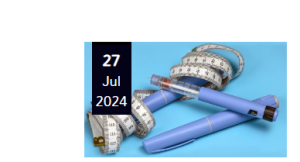It is widely used in aquaculture for sex reversal of fish, especially tilapia. At the week of life, a critical intersex period should be treated to generate all-male peoples by enhancing such hormone into young species. Since male tilapia are faster-growing and more uniform, these very important characteristics would offer significant advantages in commercial farming by saving time and costs. When this hormone is not being used properly, the consequences can be substantial so understanding how to use it right for maximum results with minimal risk.
Generally, 40 to 60 milligrams of powder are given to them in a kilogram feed when using it for fish farming per day. While the dose used is sufficient to masculinize but not pathologically alter fish health [8,37]. Normally it is mixed well with the feed and given to fishes for period of 21 days(minimum) or up to 28 day ( depending on species,facility,desired outcome etc…) Distributing the hormone evenly in the feed is essential to achieving consistent results. It is recommended that high-quality binders, or oil if in paste form and the meat mill appreciates liquidier doughs are used to have powder well attached on feed pellets for maximum intake & efficacy.
Key details: the timing and surroundings within which hormone remedy is given. The best time for giving 17-alpha methyltestosterone is at the early fry stage, usually between day 10-21 after hatching. In this stage, the fish are most sensitive to hormonal effects and can achieve up to 95% sex reversal success. Research has demonstrated that treatments performed within this timeframe can reliably produce 95-100% male populations, resulting a major increase in productivity for aquaculture systems.
There must be proper clinical oversight and environmental control during any treatment of the disease. Fry health and growth will benefit from water quality that is at or near optimal ranges, including the temperature of the water, pH levels, and oxygenation. The hormone treatment is most effective at water temperatures of 26-30 °C, for example in the farming of tilapia. Monitoring fish behavior and growth rates throughout the treatment period allows for acceptable results while maintaining optimal animal welfare.

The use of 17-alpha methyltestosterone is limited by ethical and regulatory concerns (Lewis, —) in addition to questions about whether this chemical meets the criteria for promotion as antibiotic-free. Its presence is more widespread, though its use in many regions will be subject to restrictions. Farmers should follow up local law regarding use of hormones and they must always exceed limits. The misuse or overuse may cause health hazards to consumers and environmental contamination impelling the need for following recommended practices in application and dosage.
For others who might be looking to buy the hormone, options such as 17-alpha methyltestosterone powder for fish provides an avenue through which one can get their hands on the drug but caution must however be exercised in terms of sourcing for suppliers with decent standards.integerunion Quality hormone powder results in stable effects and diminishes the chances of variability during sex-reversal.
In summary, the application of 17- alpha methyltestosterone powder in fish raising must be paid more attentions to appropriate dosage and age periods as well as environmental conditions. Aquaculture producers can improve their yield and reduce inefficiencies while also protecting the health and quality of their stock by following best practices in accordance with ethical guidelines.